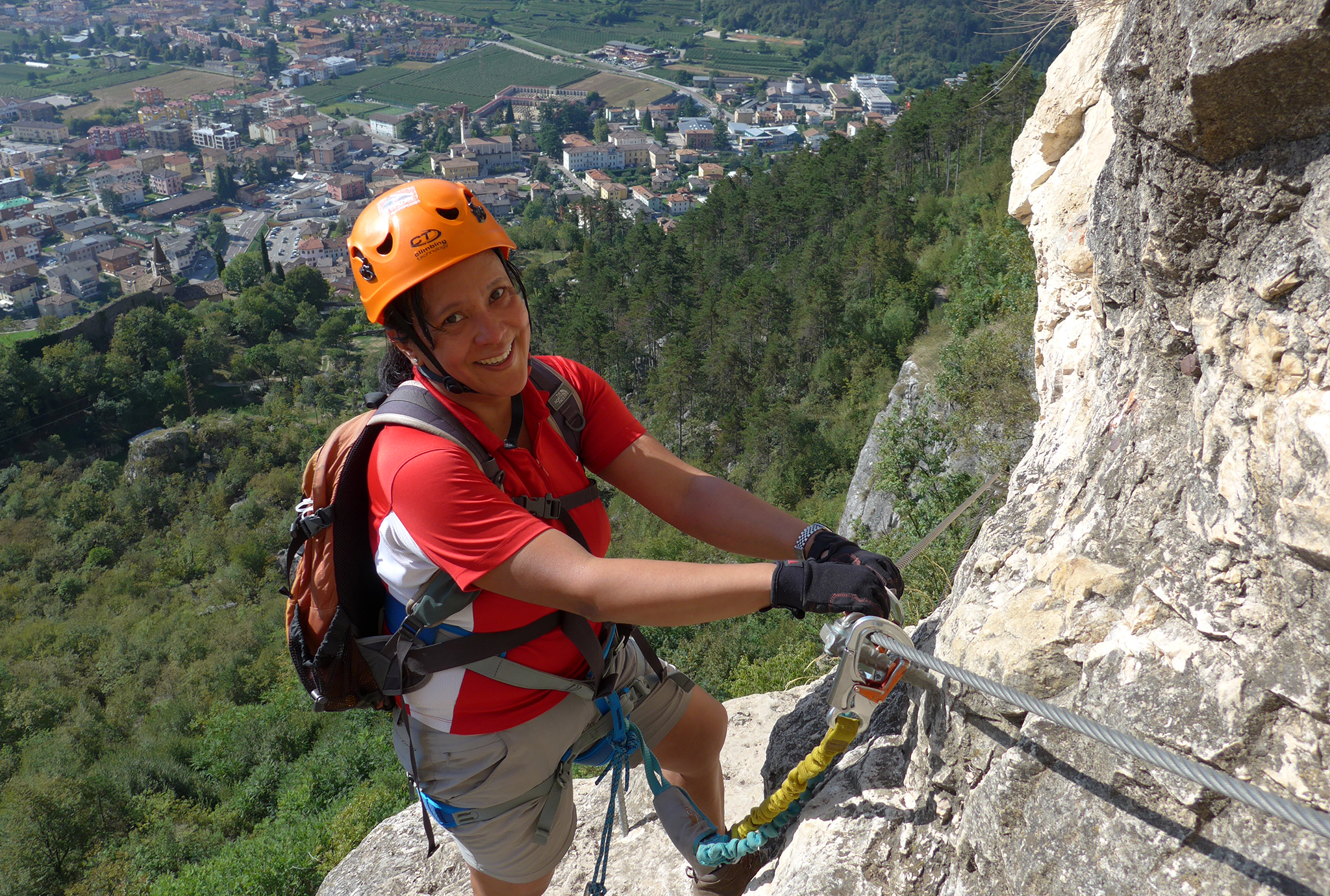Faces of the LIB: Cristina Garilao
“There is rich information stored in natural history collections
that is currently not available for biodiversity research.”
 Climbing in the mountains, Cristina Garilao enjoys nature to the fullest. © private
Climbing in the mountains, Cristina Garilao enjoys nature to the fullest. © private
Cristina Garilao has found a professional niche between biology and informatics: As head of biodiversity informatics at LIB in Hamburg, she is responsible for making information on collection objects easily accessible to the scientific community. With her work, she enables researchers worldwide to answer scientifically relevant questions with the digitized data of the LIB collections.
What drives you as a researcher?
Strictly speaking, I wouldn’t call myself a researcher. While I always had an interest in biology, I realized early in my career that I didn’t want to do my own research. Luckily, I found my niche working on various database projects where I could ‘tinker’ with biological data that could eventually be used to answer a wide variety of research questions.
What does nature mean to you?
I grew up in a big city and while I always enjoyed the occasional trips to the beach with my parents, I was a city mouse. It was really only after I got my diving license that I started to appreciate nature and actively sought it out. I remember one shallow reef dive when I realized that I could simply keep all the worries of everyday life away and just enjoy the beauty that was around me. Since moving to Europe, I find myself looking for similar refuges up in the mountains.
Could you please describe your task in biodiversity informatics at the LIB very briefly:
My core task at the moment is to consolidate the varied digitized collections at LIB at Hamburg into the Collection Management System of the LIB. Prior to the formation of the LIB, curators digitalized their collections in the way they wanted, in different formats and databases. My aim is to make the data accessible so that it can be shared easily with other people.
That´s why your work has an impact on society:
There is rich information stored in natural history collections that is currently not available for biodiversity research. At the same time, biodiversity loss is happening at alarming rates. We want to make somewhat ‘hidden’ data readily available in a Findable, Accessible, Interoperable and Replicable (FAIR) way so that it contributes to current and future research.
Which aspect of your daily work is your highlight?
While I love days when I can finally import clean datasets into Diversity Workbench and see them online in various public portals, I also like days when I learn more about what other colleagues do. After visiting museums or aquariums I always wondered what happens behind the scenes and now I have a front row seat.
Crayfish, fish, butterflies: Who has your personal affection and why?
Fish. Coming from the Philippines, I was lucky to dive in areas considered to be part of the Coral Triangle – the center of marine biodiversity. It was always amazing. With over 3,000 species of fish, one could visit a coral reef and see fish of all shapes and sizes and then visit a sandy or rocky area and observe completely different ones.
How would you describe biodiversity change to a child?
Nature finds a way to balance itself out in any habitat so every plant and animal species living there thrives. I would use a known example that kids can relate to -. Seagrass beds are marine areas that is home to many different plants and animals. Green sea turtles feed on seagrass. Tiger sharks like to eat turtles and visit seagrass beds looking for them. This usually scares away turtles from an area allowing the seagrass to regrow. Biodiversity change occurs when some external factor disrupts the whole system. Removing the sharks (e.g. via fishing) for example could result in turtles indirectly damaging a seagrass bed habitat causing the other animals there to die or move away, changing the biodiversity of the area.
What do you want people to associate with the LIB in ten years?
An institute that does state-of-art biodiversity research, happy to share its data and results fellow researchers in a FAIR way, with an engaging museum in Hamburg that excites people from all walks of life to learn more about biodiversity and evolution.
What do you see as the biggest challenge in the field of environmental protection?
Engaging and motivating people to incorporate small things in their daily lives that help protect the environment. This can be pretty challenging in some parts of the world.
What advice do you have for young biologists starting their careers?
Research tools and methods are evolving quickly. Take the time to learn what is available and what is useful for your research.
Cristina Garilao
was born in the Philippines in 1974 where she obtained her undergraduate degree in Biology and her master’s degree in Information Management. Prior to joining the LIB, she worked in different capacities with international projects like FishBase (a global biodiversity information system on finfish) and AquaMaps (an approach to generate model-based, large-scale predictions of the natural distribution of marine species). After working at the GEOMAR Helmholtz Centre for Ocean Research Kiel for 14 years, she joined the LIB as biodiversity informatics lead in Hamburg in November 2021.


